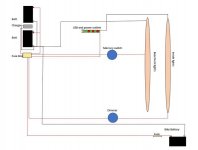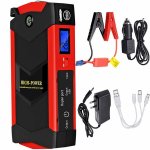I can agree to a point if all you are doing is charging a phone. However I am using it for lights in the camper and trailer, a 12 volt fan to keep us cool, charging two headsets, two phones, two Thermocell bug repellers, one computer, and sometimes watches. I have yet to find a pack that will do all of that and not be to heavy for the trunk, besides using up trunk space.
Bert's way, although a great and proper solution, is more complicated thatn what the avarage do it your selfer is willing to try. I took a simple inexpensive way that is viable, simple, and has worked on two trailers for a total of about 14 years with not a single problem.
I first did this when towing the trailer with a 1991 Yamaha Venture Royale, known to have a week charging system, but used the same battery as the bike starting battery, with no problems. I then switched to larger batteries in 2015 with the first Spyder.


